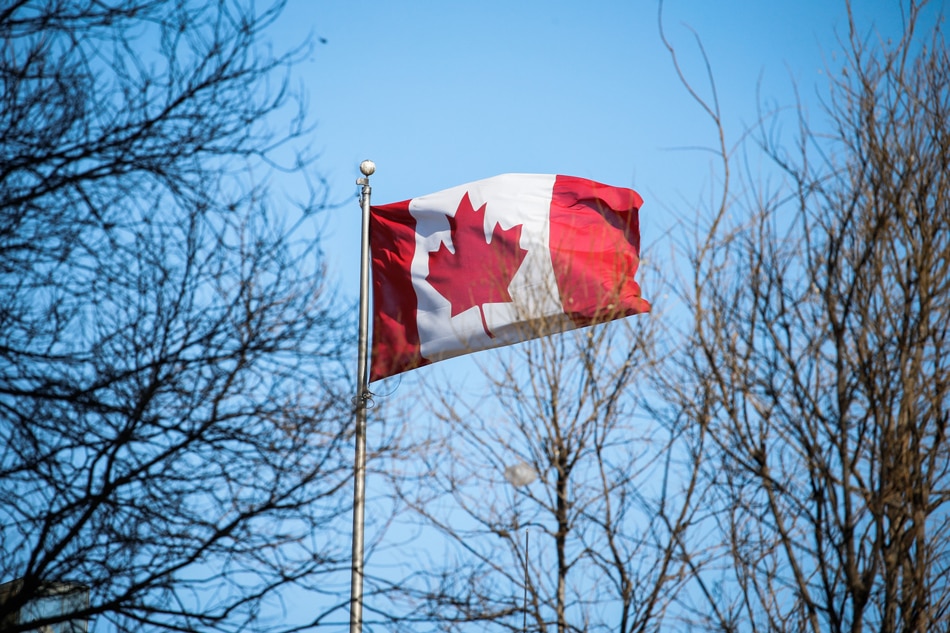Canada has included the Philippines in its Electronic Travel Authorization (eTA) program granting eligible Filipinos traveling by air for either business or leisure visa-free entry.
“Canada is a destination of choice for so many around the world. We’re making it easier for more people to visit Canada, whether they’re coming to do business, sightsee, or reunite with family and friends,” Canadian Foreign Minister Mélanie Joly said in an Embassy of Canada release Wednesday.
The Canadian Embassy in Manila said the inclusion is effective immediately and covers Philippine passport holders who have held a Canadian visitor’s visa in the past 10 years or a valid United States non-immigrant visa.
This, after the North American country added the Philippines to its eTA program, which will enable Filipinos who have held a Canadian visa for 10 years and holders of non-immigrant visas from the United States to apply for an eTA when traveling to Canada by air.
MEDIA RELEASE
Eligible citizens from the Philippines now qualify for visa-free travel to Canada
Canada values our relationship with the Philippines. With the well-established Filipino diaspora in Canada, along with an increasing number of students and tourists from 🇵🇭,(1/16) pic.twitter.com/YQxpB0LBZa
— Canada in the Philippines (@CanEmbPH) June 6, 2023
With the inclusion, eligible Filipinos need only to apply for an eTA instead of a visa.
The eTA application through Canada.ca/etA is used by Canadian officials to conduct light-touch and pre-travel screening of air travelers, and costs 7 Canadian dollars or about PHP300.
The embassy said most applications are automatically approved within minutes.
Individuals who already have a valid visa, meanwhile, can continue to use it to travel to Canada.
Those who are not eligible for an eTA, or who are traveling to Canada by means other than air (e.g., by car, bus, train, and boat, including by cruise ship), will still need a visitor visa.
“Introducing visa-free air travel will make it faster, easier, and more affordable for thousands of known travelers from the Philippines to visit Canada for up to six months for either business or leisure,” the Canadian Embassy said. “It will also help facilitate more travel, tourism, and international business between our countries, and help strengthen people-to-people and cultural ties.”
Canada’s decision complements its existing mobility measures for the Philippines, including the country’s membership in Canada’s Transit Without Visa program, which allows eligible Filipino nationals to fly through Canada on their way to or from the US without a Canadian visa, as well as the Student Direct Stream, which offers expedited study permit processing to those who are applying to study in Canada.
Foreign Affairs Secretary Enrique Manalo welcomed the inclusion and described it as a “milestone and a striking indication of Canada’s growing friendship and trust in the Philippines” and the importance it attaches to the Filipino community.
“The Philippines considers Canada as a close partner due to its well-established people-to-people ties and looks forward to charting a new era of engagement under this new policy,” Manalo said.
The latest move from Canada came following Manalo and Joly’s meeting in May in Makati City.
During the visit, Manalo and Joly agreed to elevate existing bilateral cooperation across socio-economic, political and security sectors and launch new initiatives, focused specifically on climate action and climate transition financing.
Filipinos who already hold valid Canadian visas can continue to use them to travel to Canada, while others who are not eligible for an eTA or traveling to Canada by means other than air travel would still need a visitor visa to enter the country.
Travelers may visit the Canadian government’s eTA website to find out if they are eligible for an eTA and how to apply for one.
To apply for an eTA, travelers need only a valid passport, a credit card, an email address and access to the Internet. Application costs 7 Canadian dollars, with most applications getting automatically approved “within minutes.”
The move is part of Canada’s strategy in increasing mobility measures for the Philippines, and would also support the country’s Indo-Pacific strategy.
The Philippines is among 13 countries added to the eTA, along with Antigua and Barbuda, Argentina, Costa Rica, Morocco, Panama, St. Kitts and Nevis, St. Lucia, St. Vincent and the Grenadines, Seychelles, Thailand, Trinidad and Tobago, and Uruguay.
Over the past 10 years, Canada issued 466,936 temporary resident visas to Philippine citizens.
These individuals, along with current US non-immigrant visa holders, may now be eligible for visa-free travel, said the embassy. (PNA)
The Department of Foreign Affairs (DFA) said Canada’s visa-free offer is “an important milestone and a striking indication of Canada’s growing friendship and trust in the Philippines.”
The DFA added that the fresh policy would “spur travel, stimulate more business opportunities, and foster greater interest for family reunification efforts.”
“The Philippines considers Canada as a close partner due to its well-established people-to-people ties and looks forward to charting a new era of engagement under this new policy,” the DFA said.


 “Expanding the eTA program to include countries like the Philippines is also an important part of our Indo-Pacific Strategy, as we look to further engage in the region, build on people-to-people ties, and make travel to Canada easier, faster, and safer for everyone.”
“Expanding the eTA program to include countries like the Philippines is also an important part of our Indo-Pacific Strategy, as we look to further engage in the region, build on people-to-people ties, and make travel to Canada easier, faster, and safer for everyone.”






 United Arab Emirates Dirham Exchange Rate
United Arab Emirates Dirham Exchange Rate

